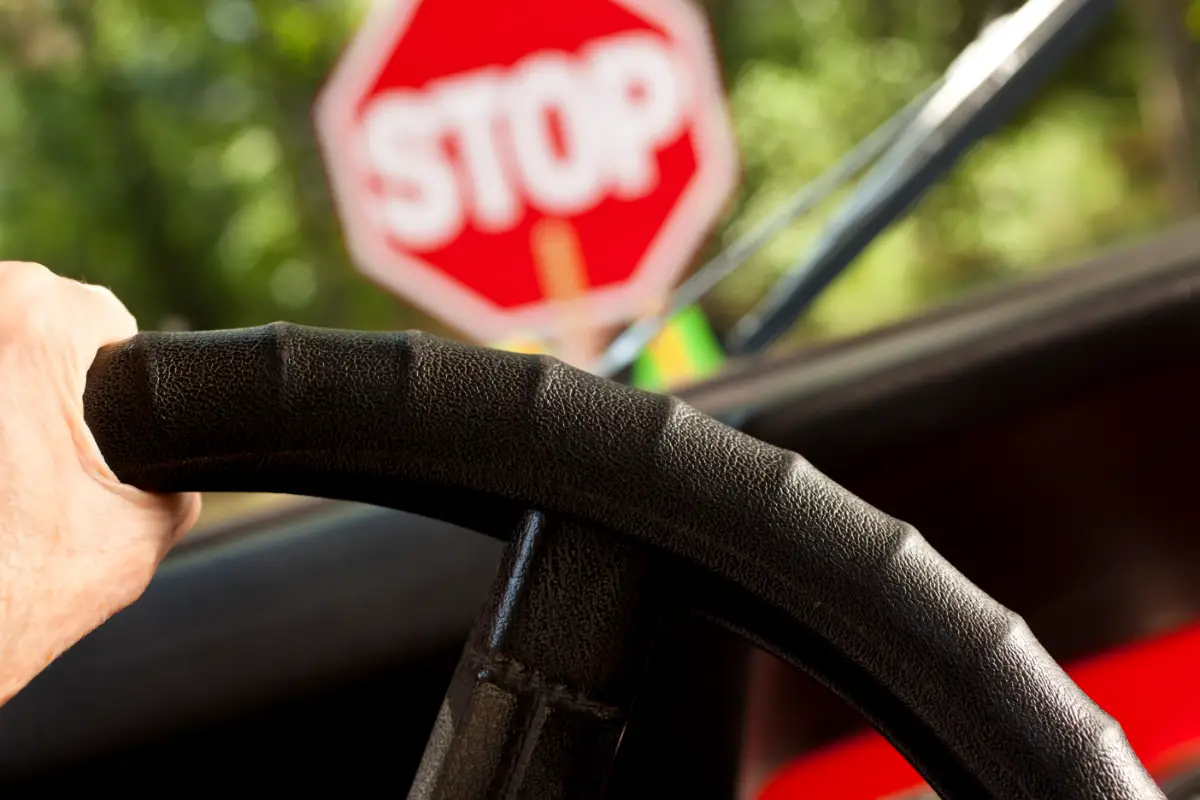Factors That Affect Stopping Distances
Regardless of the amount of driving experience you may have, one of the most important things to understand is the factors that affect your vehicle’s braking distance. Knowing how far it can travel before stopping will help keep yourself and others safe on the road.
Many drivers may not realize how long it will take to come to a stop when traveling at specific speeds. Although they may say it stops quickly, they have no idea, especially at different speeds. Stopping distances can come down to seconds or even milliseconds whether someone can stop in time for a hazard directly ahead of them.

The speed at which a vehicle travels is a factor that determines the outcome of a collision. Understanding your stopping distance will help you improve your judgment in situations that could lead to collisions.
How to calculate your stopping distance
If you apply the brakes, we know it does not stop automatically. The stopping distance is the total distance the vehicle travels before coming to a complete stop. The two main things that must be considered to calculate this are the Total Driver Reaction Time and the Vehicle Braking Distance. This explains more.
Total Driver Reaction Time is when the thought of applying the brakes reaches your mind, and you depress your foot on the brake pedal.
Vehicle Braking Distance is the time it takes from applying the brakes to when the vehicle reaches a complete stop.
Understanding Total Driver Reaction Time
It takes drivers approximately 1.5 seconds to identify a problem ahead and recognize it as a hazard. This time is known as perception time. It then takes a driver approximately one additional second to physically react by taking their foot off the accelerator and putting it on the brake pedal. It is known as reaction time.
Adding these numbers together means the average Total Driver Reaction Time would be 2.5 seconds. However, driver distractions and lack of experience can increase their reaction time.
A question often asked is how far the vehicle travels during the reaction time. On average, if road conditions are ideal, meaning the roads are smooth, flat, and dry in 2.5 seconds, a vehicle that is traveling at the following speeds, the distance is as follows:
40km/hr will travel 28 meters
50km/hr will travel 35 meters
60km/hr will travel 43 meters
Total braking distance
How much further the car will travel once the driver has reacted to the hazard ahead and applies the brakes also depends on how fast the vehicle is traveling. Considering that not all vehicles weigh the same, have the same tires, or are properly inflated, and that drivers may react at different rates, these are the approximate distances it may take a vehicle to stop once the driver applies the brakes.
When roads are wet, icy, or snow-covered, the stopping distances can be much longer. It can take up to 10 times longer to stop on snow and ice than on dry pavement – perhaps even longer with poor tires and worn brakes.
At the following speeds and once the brakes are applied, vehicles will stop at approximately:
40 km/h should stop at 17 meters
50 km/h should stop at 28 meters
60 km/h should stop at 43 meters
The total stopping distance
The total stopping distance can be calculated now by adding Driver Reaction Distance + Vehicle Braking Distance. A vehicle going at the following speeds can stop at the following distances:
40km/hr has a total stopping distance of 45m
50km/hr has a total stopping distance of 63m
60km/hr has a total stopping distance of 86m
If you consider that an NFL football field is 91m long (100 yards) between the goal lines, a stopping distance could be longer if the driver is distracted and delays their initial braking. Glancing at your cell phone for one second can mean adding 20 meters to your stopping distance, perhaps leading to a collision.
Ways to reduce stopping distance and braking time
- Speed: Driving within the posted speed limit can help reduce the stopping distance, especially on icy or wet road conditions. Braking distance increases when the speed increases.
- Following distance: It is recommended to have a minimum of 3 seconds following distance between your vehicle and the vehicle in front of you. The reason is that it will provide enough distance to stop if you need to do so suddenly. Many drivers base their following distance on car lengths, but that becomes a recipe for disaster, especially the faster that you’re traveling.
- Mechanically inspected brakes: Having well-maintained brakes will take less time to bring the vehicle to a quick stop. The brake system and tires all play a part in successful braking. Braking early and smoothly and avoiding slamming on the brakes will help to ensure a better stopping distance.
- Avoid distractions: Distractions such as texting or talking on the phone, eating, or changing the radio station can dramatically increase reaction time and stopping distance. Keeping your eyes focused on the driving environment and being aware of your surroundings will help to reduce a severe reaction and make braking more routine.
Conclusion
The braking distance your vehicle has can be one of the most crucial factors in determining the amount of safety on the road. Knowing the factors that can affect the braking distance and understanding your capabilities can help to ensure safe travels for you and other road users. Ensure you make the necessary adjustments to allow yourself the chance to stop in time.
Remember that braking distance is affected by several components, including the overall weight of the vehicle (including passengers), the condition of the brakes and tires, and the road and weather conditions. All these will impact how quickly or slowly your vehicle will stop when brakes are applied. By remembering these tips and becoming aware of what it will take to stop, you can significantly reduce your chance of a collision and become a safer driver.